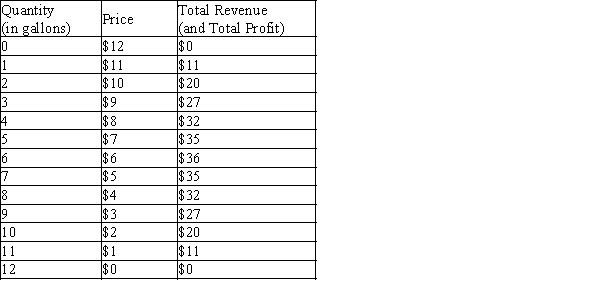Table 17-2
Imagine a small town in which only two residents, Abby and Brad, own wells that produce safe drinking water. Each week Abby and Brad work together to decide how many gallons of water to pump. They bring water to town and sell it at whatever price the market will bear. To keep things simple, suppose that Abby and Brad can pump as much water as they want without cost so that the marginal cost is zero. The weekly town demand schedule and total revenue schedule for water is shown in the table below: 
-Refer to Table 17-2. Suppose the town enacts new antitrust laws that prohibit Abby and Brad from operating as a monopoly. What will be the price of water once Abby and Brad reach a Nash equilibrium?
Definitions:
Economists
Professionals who study, develop, and apply theories and principles of economics to understand how economies work and to analyze economic policies.
Determinants
Factors that cause changes in the behavior of individuals, systems, or processes, often studied to understand cause-and-effect relationships.
Elasticity of Demand
A measure of how much the quantity demanded of a good responds to a change in the price of that good, quantitatively defined as the percentage change in quantity demanded divided by the percentage change in price.
Q25: In monopolistically competitive markets, free entry and
Q28: Refer to Table 17-33. Does Howard have
Q61: When monopolistically competitive firms advertise, in the
Q84: Refer to Table 17-6. The socially efficient
Q161: Which potentially anti-competitive business practice is often
Q210: The equilibrium quantity in markets characterized by
Q232: Edward Chamberlin argued that brand names<br>A) hampered
Q292: Refer to Scenario 16-9. If advertising were
Q411: To maximize profit, a competitive firm hires
Q511: Policymakers have generally come to accept the